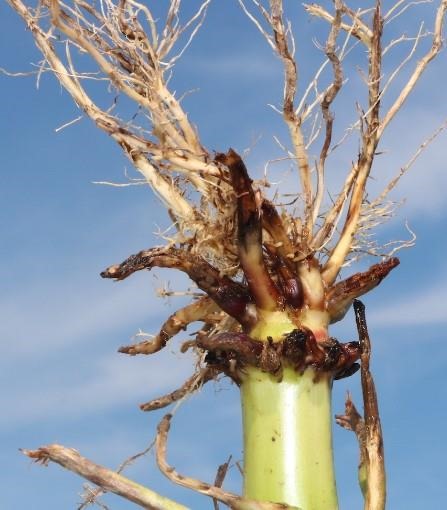Healthy corn roots are white, and these roots will extend far beyond what you are able to dig with a spade. Knowing the difference between rootworm feeding and “shovel blight” will be helpful. Roots injured by a shovel will remain relatively healthy looking and white but are ikely to be a little frayed by the shovel. Roots pruned by rootworms will be discolored at the tips and that discoloration may extend back on the root. Rootworms may also “scar” individual roots and this injury will look brownish. Washing roots soon after digging will help distinguish rootworm injury from shovel blight.
The Iowa State Nodal Injury Scale (NIS), developed by Iowa State Entomologists, is the industry standard for quantifying root damage and this rating scale focuses on root pruning cause by late instar larvae. Briefly, the number to the left of the decimal is the number (or equivalent number) of root nodes pruned to within in 1 ½ inches of the stalk. The number to the right of the decimal equals the percentage of the next node of roots pruned. Therefore, a rating of 1.5 indicates the equivalent of 1 full root node pruned and 50% of the next. (See image) I do like the idea of taking the time to rate damage as it gives you some perspective from year to year and avoids people trying to translate what a lot or a little really is.
Late-July, early-August is usually the best time to evaluate the presence or absence of rootworm damage. If we wait until late-August, there may be significant regeneration of roots which can mask feeding. August root evaluations are still possible just more difficult.

Source : wisc.edu